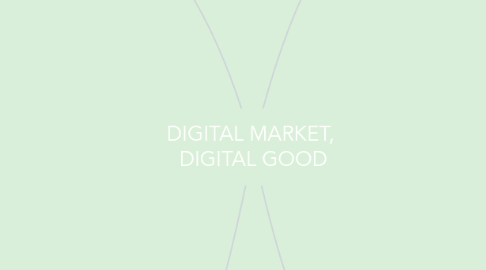
1. E-commerce and the internets
1.1. E-commerce today
1.1.1. the use of the internet and the web to transact business
1.2. The new E-commerce: social,mobile,local
1.2.1. from eyeball to conversations
1.2.2. from the desktop to smartphone
1.3. Why E-commerce id different
1.3.1. it's unique nature of the internet and the web
1.3.2. ubiquity
1.3.2.1. e-commerce available just about everywhere, at all times
1.3.3. global reach
1.3.4. universal standard
1.3.5. richness
1.3.6. interactivity
1.3.7. information density
1.3.8. personalization/customization
1.3.9. social technology : user content generation and social networking
1.4. Key concept in e-commerce : Digital market and digital goods in a global marketplace
1.4.1. digital goods : goods that can be delivered over a digital network (music,video,software,newspaper,etc)
2. Building an E-commerce Presence
2.1. Subtopic
2.1.1. the most important management challenges in building a successful e-commerce presence
2.2. Develop an e-commerce presence map
2.2.1. presence requires firms to consider the four different types of presence, with specific platforms and activities associated with each
2.3. Develop a timeline: milestones
2.3.1. planning: web missionplan
2.3.2. web site: development: web site plan
2.3.3. web implementation: a functional, web site
2.3.4. social media plan: a social media plan
2.3.5. social media implementation: functioning social media presence
2.3.6. mobile plan: a mobile media plan
3. Business and Technology
3.1. Type of E-commerce
3.1.1. Business to customer
3.1.1.1. electronic commerce involves retailing products and services to individual shoppers
3.1.2. Business to business
3.1.2.1. electronic commerce involves sales of goods and services aamong business
3.1.3. Customer of customer
3.1.3.1. electronic commerce involves consumers selling directly to consumers
3.2. E-commerce business models
3.2.1. portal
3.2.1.1. gateways to the web, and are often defined as those sites which users set as their homepage
3.2.2. e-tailer
3.2.2.1. online retail stores
3.2.3. content provider
3.2.4. transaction broker
3.2.5. market creator
3.2.6. community provider
3.2.7. advertising revenue model
3.2.8. free/freemium revenue model
3.2.9. transaction free revenue model
3.2.10. affiliate revenue model
3.3. Social Networking and the wisdom of crowds
3.3.1. creating sites where thousand even millions of people can interact offer business firms new ways to market and advertise, and to discover who likes or hate their product
3.4. E-commerce marketing: social,mobile,local
3.4.1. digital social graph: a mapping of all significant online social relationship
3.5. B2B E-commerce: new efficiencies and relationship
3.5.1. B2B E-commerce still based on proprietary systems for electronic data interchange(EDI)
3.5.2. private industrial networks: typically consist of a large firm using a secure web site to link to its suppliers and other business partners
4. Mobile E-commerce and Local E-commerce
4.1. Location based services and applications
4.1.1. include
4.1.1.1. geosocial services: can tell where your friends are meeting
4.1.1.2. geoadvertising: can tell where to find something near you
4.1.1.3. geoinformation services: can tell the price of things or about special exhibits at a museum

